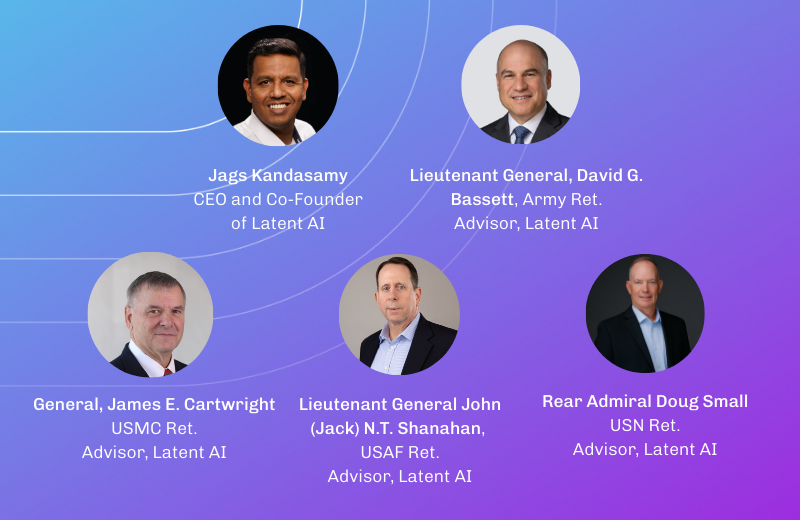When the Joint Chiefs Call for Edge AI: How Industry Must Answer the Call
Translating DoD’s “small and fast” requirements into deployed battlefield capabilities
Admiral Christopher Grady, Vice Chairman of the Joint Chiefs of Staff, recently made a statement that should be a wake-up call for the AI industry. Speaking about emerging technologies, he said: “At the very high end, I want AI at the edge, something small and fast that fits, has the right form factor.”
This isn’t just another defense wish list item. It’s a direct challenge to an industry that has spent years debating cloud versus edge strategies while warfighters wait for solutions that actually work in the field.
Why the Joint Chiefs Are Right About Edge AI
Admiral Grady’s focus on “foundational over flashy” technologies reflects hard-earned lessons from contested environments where connectivity is unreliable and decisions must be made in real-time. When he asks for AI that’s “small and fast that fits,” he’s describing capabilities that can’t wait for a data connection to the cloud.
The numbers tell the story. Traditional cloud AI deployments require significant infrastructure—studies show edge AI can reduce energy consumption by 65-80% compared to cloud-based alternatives while maintaining accuracy. More critically, edge solutions continue operating when connectivity fails, which isn’t theoretical in military operations—it’s operational reality.
Consider the hardware requirements: cloud AI often demands high-end GPUs consuming 700 watts or more, while edge solutions can deliver comparable performance on 50-watt devices. For military applications where size, weight, power, and cooling (SWaP-C) constraints are critical, this difference isn’t just technical—it’s mission-enabling.
Industry’s Response Must Be Immediate and Proven
The challenge Admiral Grady poses isn’t about future development—it’s about deploying proven capabilities today. Through programs like Project AMMO and Project Linchpin, we’ve demonstrated exactly what the Joint Chiefs are requesting: AI systems that reduce model update cycles from months to days, enabling 97% faster adaptation to evolving battlefield conditions. This isn’t experimental technology, it is deployed across Army, Navy, and Air Force programs, delivering measurable advantages to warfighters today.
The key insight from these deployments is that “small and fast” isn’t just about hardware specifications. It’s about optimization techniques that compress AI models by up to 92% without sacrificing accuracy, enabling deployment on resource-constrained edge devices while maintaining the performance standards that mission-critical applications require.
What “Small and Fast” Actually Means in Practice
When Admiral Grady talks about form factor requirements, he’s addressing real operational constraints. Edge AI must fit into existing military platforms—from drones to ground vehicles to forward operating bases—without requiring massive infrastructure overhauls.
Our work with partners like Dell and NVIDIA demonstrates how optimization can transform deployment economics. Where traditional cloud solutions might require 50 high-end GPUs costing $225,000 per site, edge-optimized AI achieves the same accuracy on just four GPUs at $18,000—a 92% hardware reduction that makes scaling across multiple installations financially viable.
This efficiency translates directly into operational advantage. Edge processing eliminates the latency introduced by cloud communications, enabling real-time decision-making for applications like automated target recognition and threat detection, where milliseconds matter.
The Strategic Imperative: Deploy Now, Not Later
Admiral Grady’s emphasis on foundational technologies reflects a critical understanding: America’s competitive advantage lies not in the most advanced laboratory demonstrations, but in systems that deliver reliable capabilities under fire.
The path forward requires industry to prioritize deployment-ready solutions over theoretical breakthroughs. The Defense Department programs like those through DIU have proven that rapid prototyping and fielding can work when industry partners understand military requirements and deliver practical solutions.
International engagement will be a solid demonstration of how American AI innovations can be adapted for coalition operations while maintaining high security standards. This exportability becomes crucial as Admiral Grady’s vision extends beyond U.S. forces to allied interoperability.
Answering the Call
When the Vice Chairman of the Joint Chiefs specifically requests AI that’s “small and fast,” he’s not describing future requirements—he’s articulating immediate operational needs that industry can meet today. The question isn’t whether we can develop these capabilities, but whether we can deploy them at the speed and scale that military operations demand.
As someone who understands these requirements firsthand, I see this as both validation of the edge-first approach and a challenge to industry: stop talking about what’s possible and start delivering what’s necessary.
The Joint Chiefs have made their requirements clear. The technology exists. The security frameworks are proven. The deployment pathways through programs like xTech and DIU are established.
Now industry must answer the call—not with promises of future capabilities, but with systems ready for immediate fielding. Because when Admiral Grady asks for AI at the edge, he’s asking for capabilities that can give American forces and our allies the decisive advantage that only comes from being first to deploy, not first to demonstrate.
The time for debate is over. The time for deployment is now.





